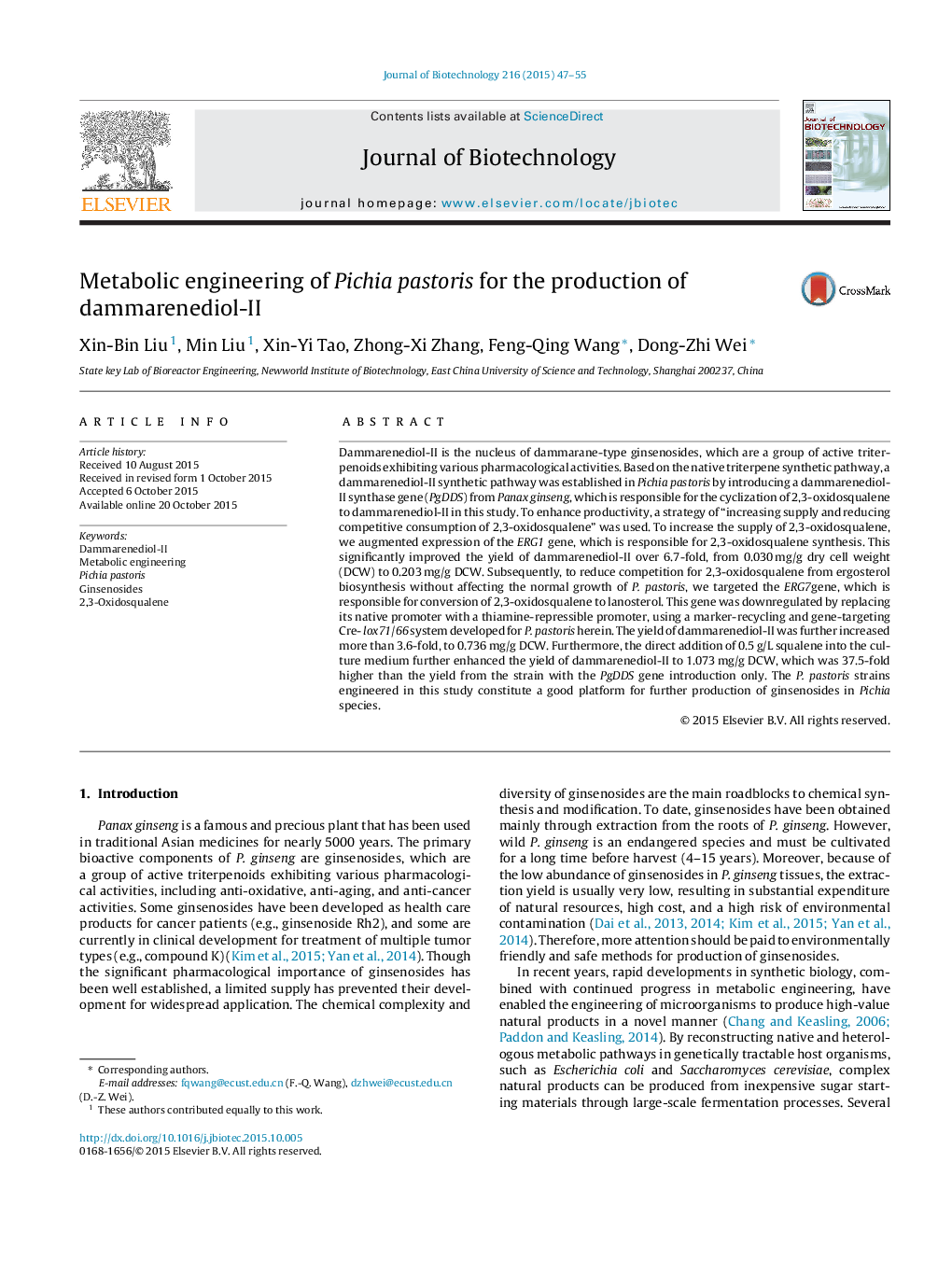| کد مقاله | کد نشریه | سال انتشار | مقاله انگلیسی | نسخه تمام متن |
|---|---|---|---|---|
| 22776 | 43384 | 2015 | 9 صفحه PDF | دانلود رایگان |

• Increasing supply and reducing competitive consumption of 2,3-oxidosqualene was used.
• A marker-recycling and gene-targeting Cre-lox71/66 system was developed herein.
• The yield of dammarenediol-II in P. pastoris was increased significantly.
• This study constitutes a good platform for production of ginsenosides in Pichia.
Dammarenediol-II is the nucleus of dammarane-type ginsenosides, which are a group of active triterpenoids exhibiting various pharmacological activities. Based on the native triterpene synthetic pathway, a dammarenediol-II synthetic pathway was established in Pichia pastoris by introducing a dammarenediol-II synthase gene (PgDDS) from Panax ginseng, which is responsible for the cyclization of 2,3-oxidosqualene to dammarenediol-II in this study. To enhance productivity, a strategy of “increasing supply and reducing competitive consumption of 2,3-oxidosqualene” was used. To increase the supply of 2,3-oxidosqualene, we augmented expression of the ERG1 gene, which is responsible for 2,3-oxidosqualene synthesis. This significantly improved the yield of dammarenediol-II over 6.7-fold, from 0.030 mg/g dry cell weight (DCW) to 0.203 mg/g DCW. Subsequently, to reduce competition for 2,3-oxidosqualene from ergosterol biosynthesis without affecting the normal growth of P. pastoris, we targeted the ERG7gene, which is responsible for conversion of 2,3-oxidosqualene to lanosterol. This gene was downregulated by replacing its native promoter with a thiamine-repressible promoter, using a marker-recycling and gene-targeting Cre- lox71/66 system developed for P. pastoris herein. The yield of dammarenediol-II was further increased more than 3.6-fold, to 0.736 mg/g DCW. Furthermore, the direct addition of 0.5 g/L squalene into the culture medium further enhanced the yield of dammarenediol-II to 1.073 mg/g DCW, which was 37.5-fold higher than the yield from the strain with the PgDDS gene introduction only. The P. pastoris strains engineered in this study constitute a good platform for further production of ginsenosides in Pichia species.
Journal: Journal of Biotechnology - Volume 216, 20 December 2015, Pages 47–55